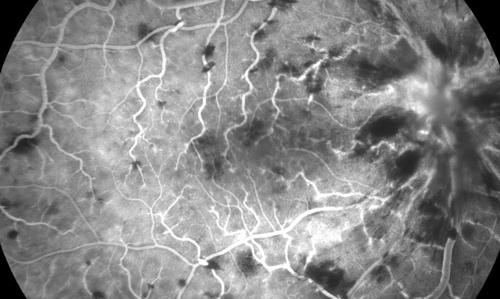
 |
Central Retinal Vein Occlusion |
 |

Central Retinal Vein Occlusion | ||
A central retinal vein occlusion is a blockage of the central retinal vein that prohibits blood flow. This is a stroke in the eye. | ||
| ||
A central retinal vein occlusion is caused by a piece of cholesterol plaque or a blood clot that prevents the blood from flowing into a part of the eye. This is most commonly caused by high blood pressure, coronary artery disease, diabetes or vascular disease, however, may also be a complication of other systemic disorders. | ||
| ||
Early onset symptom of a vein occlusion is occasionally a transient vision loss episode(s) in which your vision in one eye goes away for a brief period and then returns. The first symptom is more commonly sudden severe vision loss in one eye. If the macula is not impacted, you may not notice much vision loss. | ||
| ||
A central retinal vein occlusion is diagnosed by retinal examination. Special pictures called a fluorescein angiogram, and an OCT (optical coherence tomography) scan will be used to determine the impact on blood flow and the amount of damage caused. You may be asked to have lab tests, a carotid ultrasound and echocardiogram. You will need to also see your medical doctor for a cardiovascular evaluation. | ||
| ||
While injections of medication into the eye, and laser treatment may help in some circumstances, a treatment plan is very individual. The expected outcome for your vision also varies for each person. | ||
| ||
It is important to treat the underlying medical causes of your vascular disorder to prevent further retinal vein occlusions. | ||
| ||
 |
 |
|
